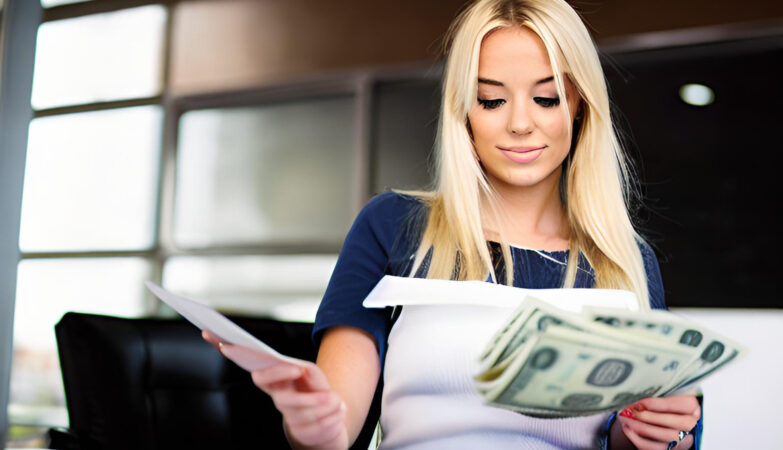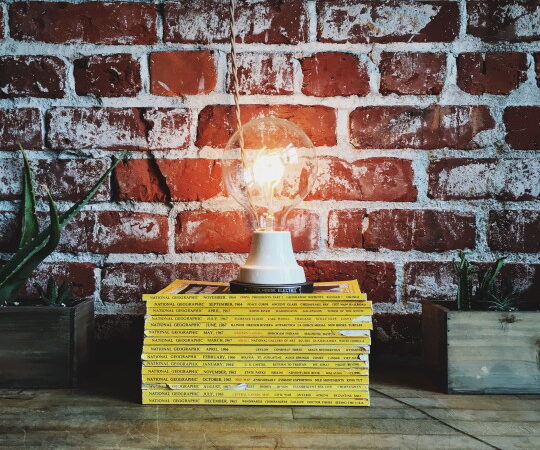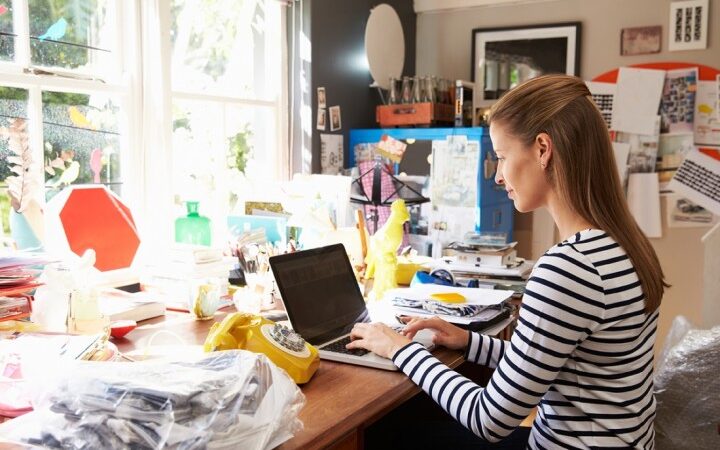Photography Bootcamp
Learn Professional dSLR Photography
- Photography BootcampPhotography Bootcamp
- A single-lens-reflex (SLR) camera is a camera where the photographer sees exactly the same image that is exposed to the film. 22
- ApertureAperture 33
- ApertureAperture A cameraA camera’s aperture is located in the lens.’s aperture is located in the lens. Think of it as a flexible gateway that can beThink of it as a flexible gateway that can be opened or closed by the photographer to controlopened or closed by the photographer to control the amount of light entering the camera.the amount of light entering the camera. Aperture size is generally expressed as anAperture size is generally expressed as an f-f- numbernumber.. Historically, the f-number was calculated byHistorically, the f-number was calculated by dividing the focal length of a lens by thedividing the focal length of a lens by the diameter of the aperture. For instance, if youdiameter of the aperture. For instance, if you had ahad a 50mm50mm lens and your aperture measuredlens and your aperture measured 25mm25mm in diameter, your f-number would bein diameter, your f-number would be f2.0f2.0 (50 ÷ 25 = 2).(50 ÷ 25 = 2). 44
- Shutter SpeedShutter Speed 55
- Shutter SpeedShutter Speed Once the light has passed through the apertureOnce the light has passed through the aperture it enters the main camera body. Before the lightit enters the main camera body. Before the light is exposed, the mirror must flip up (in DSLRis exposed, the mirror must flip up (in DSLR cameras only), and a shutter curtain must opencameras only), and a shutter curtain must open for a precise amount of time.for a precise amount of time. The shutter may remain open anywhere from aThe shutter may remain open anywhere from a fraction of a second to several minutes (or evenfraction of a second to several minutes (or even hours) depending on the type of shot thehours) depending on the type of shot the photographer intends to capture. Shutterphotographer intends to capture. Shutter speeds are usually displayed as fractions (i.e.speeds are usually displayed as fractions (i.e. 1/250 second, 1/1000 second, 1/15 second1/250 second, 1/1000 second, 1/15 second etc.)etc.) 66
- ISOISO 77
- ISOISO ISO is an abbreviated term used inISO is an abbreviated term used in photography to describe how sensitive aphotography to describe how sensitive a roll of film or digital sensor is to light. ISOroll of film or digital sensor is to light. ISO increments commonly range between 100increments commonly range between 100 and 3200 but can go higher and lower inand 3200 but can go higher and lower in some cameras. The lower the ISO is set,some cameras. The lower the ISO is set, the less sensitive your camera will be tothe less sensitive your camera will be to light, andlight, and vise versavise versa.. 88
- Proper ExposureProper Exposure A properly exposed photograph reliesA properly exposed photograph relies entirely on a perfect balance betweenentirely on a perfect balance between these three variables. Different shootingthese three variables. Different shooting scenarios each require a differentscenarios each require a different combination ofcombination of ApertureAperture,, Shutter SpeedShutter Speed,, andand ISOISO.. 99
- Cheat SheetCheat Sheet http://blog.hamburger-fotospots.de/genialer-spickzettel-fuer-fotografen-als-kostenloser-download/http://blog.hamburger-fotospots.de/genialer-spickzettel-fuer-fotografen-als-kostenloser-download/ 1010
- Rule of ThirdsRule of Thirds 1111
- Rule of ThirdsRule of Thirds As you can see in the graph above, theAs you can see in the graph above, the frame is divided into 9 sections. Theseframe is divided into 9 sections. These imaginary lines are meant to be a guideimaginary lines are meant to be a guide when you are framing your shot. If you usewhen you are framing your shot. If you use these basic rules, the image in the framethese basic rules, the image in the frame will feel more "balanced" and pleasing towill feel more "balanced" and pleasing to the eye.the eye. 1212
- Rule of ThirdsRule of Thirds 1313
- Rule of ThirdsRule of Thirds Note that theNote that the intersectionintersection of two lines falls right near theof two lines falls right near the middle of the womanmiddle of the woman’s face! And feel the tension and’s face! And feel the tension and sense of movement created by all that mysterious blacksense of movement created by all that mysterious black space to the left!space to the left! The idea behind this old rule is that a picture usuallyThe idea behind this old rule is that a picture usually becomes more interesting if the major, dominating,becomes more interesting if the major, dominating, elements are a bit off center.elements are a bit off center. The Rule of Thirds is a simple tool to help you avoid theThe Rule of Thirds is a simple tool to help you avoid the boring habit of putting everythingboring habit of putting everything smack in the middlesmack in the middle of every picture. Instead, keep imagining those lines,of every picture. Instead, keep imagining those lines, running as shown above, and try to place your object ofrunning as shown above, and try to place your object of interestinterest somewhere along those linessomewhere along those lines.. 1414
- Rule of ThirdsRule of Thirds 1515
- Rule of ThirdsRule of Thirds 1616
- Rule of ThirdsRule of Thirds 1717
- PosesPoses 1818
- PosesPoses Sitting/Standing/Kneeling/Lying DownSitting/Standing/Kneeling/Lying Down Facial ExpressionFacial Expression Angle, 45 degrees, above and belowAngle, 45 degrees, above and below HandsHands LegsLegs HairHair 1919
- Muslin StandsMuslin Stands 2020
- Muslin BackdropsMuslin Backdrops 2121
- Paper BackdropsPaper Backdrops 2222
- Light StandLight Stand 2323
- Soft BoxSoft Box 2424
- Shoot Through UmbrellaShoot Through Umbrella 2525
- Reflector UmbrellaReflector Umbrella 2626
- StrobesStrobes 2727
- StrobesStrobes 2828
- Portable PowerPortable Power 2929
- Colored GelsColored Gels 3030
- Honeycomb GridHoneycomb Grid 3131
- Honeycomb GridHoneycomb Grid They make the light more directional. thisThey make the light more directional. this is good if you are doing a hair light. withis good if you are doing a hair light. with out the gird excess light could hit theout the gird excess light could hit the camera lens and then cause lens flare. Itcamera lens and then cause lens flare. It also cuts down on the intensity of lightalso cuts down on the intensity of light because the black part of the grid absorbsbecause the black part of the grid absorbs some of the light, and the grid casts very asome of the light, and the grid casts very a soft shadow over the entire subject.soft shadow over the entire subject. 3232
- Cybersync TransmitterCybersync Transmitter 3333
- Cybersync ReceiverCybersync Receiver 3434
- Pocket WizardPocket Wizard 3535
- Flash UnitsFlash Units 3636
- TTL ModeTTL Mode Nikon first introduced TTL (Through The Lens) flashNikon first introduced TTL (Through The Lens) flash technology in 1980. The basics of TTL operation istechnology in 1980. The basics of TTL operation is rather simple and applies to all camera systems. Withrather simple and applies to all camera systems. With TTL flash exposure, when the shutter is tripped, the lightTTL flash exposure, when the shutter is tripped, the light from the flash fires off, racing to hit the subject. This lightfrom the flash fires off, racing to hit the subject. This light hits the subject then bounces back to the camera. Thehits the subject then bounces back to the camera. The light traveling the speed of light, travels through the lenslight traveling the speed of light, travels through the lens (and any filters which may be attached) and strikes the(and any filters which may be attached) and strikes the film plane. The light then bounces down off the film to afilm plane. The light then bounces down off the film to a sensor which reads the light as it builds up exposure onsensor which reads the light as it builds up exposure on the film. Once the sensor and the connected computerthe film. Once the sensor and the connected computer software determines the light has massed enough for thesoftware determines the light has massed enough for the correct exposure, the camera's computer turns off thecorrect exposure, the camera's computer turns off the flash (just like a light switch in a house goes on-off).flash (just like a light switch in a house goes on-off). 3737
- TTL ModeTTL Mode With TTL technology, the camera's computerWith TTL technology, the camera's computer provides the correct exposure regardless of theprovides the correct exposure regardless of the aperture or flash-to-subject distance (as long asaperture or flash-to-subject distance (as long as they're within the realm of the flash's power).they're within the realm of the flash's power). TTL technology puts the control of depth-of-fieldTTL technology puts the control of depth-of-field back into the hands of the photographer. Weback into the hands of the photographer. We can pick the aperture for the desired depth-of-can pick the aperture for the desired depth-of- field and not have it preselected by the flash-to-field and not have it preselected by the flash-to- subject distance.subject distance. 3838
- Sekonic Light MeterSekonic Light Meter 3939
- White BalanceWhite Balance White balance (WB) is the process ofWhite balance (WB) is the process of removing unrealistic color casts, so thatremoving unrealistic color casts, so that objects which appear white in person areobjects which appear white in person are rendered white in your photo.rendered white in your photo. Proper camera white balance has to takeProper camera white balance has to take into account the "color temperature" of ainto account the "color temperature" of a light source, which refers to the relativelight source, which refers to the relative warmth or coolness of white light.warmth or coolness of white light. 4040
- White BalanceWhite Balance 4141
- White BalanceWhite Balance White balanceWhite balance (WB) is the process of(WB) is the process of removing unrealistic color casts, so thatremoving unrealistic color casts, so that objects which appearobjects which appear whitewhite in person arein person are renderedrendered whitewhite in your photo.in your photo. 4242
- White BalanceWhite Balance Auto white balanceAuto white balance is available in all digital cameras andis available in all digital cameras and uses a best guess algorithm within a limited range--uses a best guess algorithm within a limited range-- usually between 3000/4000 K and 7000 Kusually between 3000/4000 K and 7000 K custom white balance actually uses the camera tocustom white balance actually uses the camera to measure the color of the light hitting the sensor. To makemeasure the color of the light hitting the sensor. To make sure that the camera is measuring the color of the lightsure that the camera is measuring the color of the light source and not the color of some object from which lightsource and not the color of some object from which light has been reflected, the photographer must use a neutralhas been reflected, the photographer must use a neutral gray or white object to establish the white balance.gray or white object to establish the white balance. Typically, the photographer will photograph a gray card,Typically, the photographer will photograph a gray card, or other similar object, and use that to establish the whiteor other similar object, and use that to establish the white balance.balance. 4343
- White Balance Card 18% Gray Grey Card.White Balance Card 18% Gray Grey Card. http://amzn.to/1WvB3fehttp://amzn.to/1WvB3fe 4444
- Obtaining a Custom WhiteObtaining a Custom White Balance:Balance: camera’s menu and locate the “Customcamera’s menu and locate the “Custom White Balance” or “Custom WB” option.White Balance” or “Custom WB” option. camera will bring up the last image youcamera will bring up the last image you photographed.photographed. 4545
- Obtaining a Custom WhiteObtaining a Custom White Balance:Balance: Press the “Set” button on the rear of thePress the “Set” button on the rear of the camera and it will ask you if you want tocamera and it will ask you if you want to “Use WB data from this image for Custom“Use WB data from this image for Custom WB.”WB.” Select OKSelect OK change the WB setting on your camera tochange the WB setting on your camera to the Custom WB settingthe Custom WB setting 4646
- ExpoDiscExpoDisc http://amzn.to/1VSlRImhttp://amzn.to/1VSlRIm 4747
- Attach the ExpoDisc to the front of yourAttach the ExpoDisc to the front of your lens (white side towards camera).lens (white side towards camera). Some cameras require the lens to be inSome cameras require the lens to be in manual focus to capture an exposuremanual focus to capture an exposure through the ExpoDisc.through the ExpoDisc. 4848
- Camera Program or Aperture mode willCamera Program or Aperture mode will automatically produce a good exposureautomatically produce a good exposure through the ExpoDiscthrough the ExpoDisc When Using Flash. You must set yourWhen Using Flash. You must set your custom white balance using the samecustom white balance using the same shutter speed that you intend to use whenshutter speed that you intend to use when photographing your subject. Your fl ashphotographing your subject. Your fl ash must fi re when setting the custom whitemust fi re when setting the custom white balance.balance. 4949
- Aim the camera towards the dominantAim the camera towards the dominant light source (just like an incident lightlight source (just like an incident light meter).meter). Follow your camera’s custom whiteFollow your camera’s custom white balance procedure to take a white balancebalance procedure to take a white balance reading.reading. 5050
- Ambient Light (Indoor or Outdoor). Aim theAmbient Light (Indoor or Outdoor). Aim the ExpoDisc towards the brightest lightExpoDisc towards the brightest light source, or area of the sky. It is best tosource, or area of the sky. It is best to stand in the same light as your subject tostand in the same light as your subject to set the custom white balance.set the custom white balance. On-Camera Flash (Bounce Flash). AimOn-Camera Flash (Bounce Flash). Aim the camera and the fl ash towards thethe camera and the fl ash towards the bounce surface (e.g., ceiling) to set yourbounce surface (e.g., ceiling) to set your custom white balancecustom white balance 5151
- Typical Shoot DayTypical Shoot Day Locations – beach, studio, etc.Locations – beach, studio, etc. WardrobeWardrobe MuaMua SetupSetup bringing friendsbringing friends MeetingMeeting talkingtalking shootingshooting getting photos backgetting photos back 5252
- Lighting DiagramsLighting Diagrams 5353
- § 2257. Record keeping§ 2257. Record keeping requirementsrequirements http://www.law.cornell.edu/uscode/18/usc_http://www.law.cornell.edu/uscode/18/usc_ sec_18_00002257----000-.htmlsec_18_00002257----000-.html 5454
- Model ReleaseModel Release CommercialCommercial TFPTFP 5555
- LegalLegal PermitsPermits InsuranceInsurance 5656
- RAW ImagesRAW Images Raw image files are sometimes calledRaw image files are sometimes called digital negativesdigital negatives, as they fulfill the same, as they fulfill the same role as negatives in film photography: thatrole as negatives in film photography: that is, the negative is not directly usable as anis, the negative is not directly usable as an image, but has all of the informationimage, but has all of the information needed to create an image.needed to create an image. 5757
- PhotoshopPhotoshop 5858
- Spot HealSpot Heal 5959
- Clone StampClone Stamp 6060
- Clone StampClone Stamp click on the clone stamp toolclick on the clone stamp tool Select stamp brush type and size [top, left box]Select stamp brush type and size [top, left box] Place your cursor near where you wish toPlace your cursor near where you wish to correct a blemish. You are looking for colors andcorrect a blemish. You are looking for colors and textures that will substitute for the flawed area.textures that will substitute for the flawed area. Often, this is an area right next to the flaw.Often, this is an area right next to the flaw. Hold down option key and click where you wantHold down option key and click where you want to capture the pattern to be stamped onto theto capture the pattern to be stamped onto the flawflaw Release option key and stamp where theRelease option key and stamp where the blemish isblemish is 6161
- DodgeDodge 6262
- BurnBurn 6363
- SpongeSponge Decide if you want to make your colorDecide if you want to make your color area more or less intense. if you wantarea more or less intense. if you want more intensity, select "saturate" from themore intensity, select "saturate" from the control bar at the top of your screen. if youcontrol bar at the top of your screen. if you want less intensity, hit "desaturate"want less intensity, hit "desaturate" instead.instead. 6464
- LightroomLightroom Adobe.com/lightroomAdobe.com/lightroom ExposureExposure WatermarkWatermark Bulk Edit toolsBulk Edit tools 6565
- Where to meet modelsWhere to meet models meeting and hiring modelsmeeting and hiring models business cardsbusiness cards websitewebsite networkingnetworking 6666
- Event PhotographyEvent Photography How to shootHow to shoot Talking to peopleTalking to people Shoot wide open, or with the maximumShoot wide open, or with the maximum aperture of your lens.aperture of your lens. – f/1.4 or f/1.8 aperturef/1.4 or f/1.8 aperture 6767
- Event PhotographyEvent Photography range between 1/100-1/200 as a minimumrange between 1/100-1/200 as a minimum for shutter speed.for shutter speed. ISO levels up to 3200 will produce veryISO levels up to 3200 will produce very good quality for almost all DSLR cameras.good quality for almost all DSLR cameras. For compact P&S cameras, 1600 and lowerFor compact P&S cameras, 1600 and lower will produce the best results.will produce the best results. 6868
- ModesModes Shot in Aperture mode to control Depth ofShot in Aperture mode to control Depth of FieldField create shallow Depth of Field for a portrait,create shallow Depth of Field for a portrait, people photos, or any time I want apeople photos, or any time I want a blurred background (choose a largeblurred background (choose a large aperture like f2.8 or f1.8).aperture like f2.8 or f1.8). 6969
- ModesModes larger DoF as well such as for a landscapelarger DoF as well such as for a landscape photo, group portraits, or shots where Iphoto, group portraits, or shots where I want maximum detail and sharpnesswant maximum detail and sharpness (choose a smaller aperture like f11 or(choose a smaller aperture like f11 or smaller)smaller) Shutter Mode when my top priority isShutter Mode when my top priority is controlling motioncontrolling motion – either freeze or blur iteither freeze or blur it 7070
- Product PhotographyProduct Photography http://amzn.to/1V03ZdEhttp://amzn.to/1V03ZdE 7171
- Portable studio light boxPortable studio light box Portable Light TentPortable Light Tent diffusion is the process of softening thediffusion is the process of softening the light from your bulbs to produce a lesslight from your bulbs to produce a less harsh (more “diffuse”) distribution of light.harsh (more “diffuse”) distribution of light. This gives a more professional look toThis gives a more professional look to your shots and avoids harsh shadows andyour shots and avoids harsh shadows and specular highlights. Diffusion is a criticalspecular highlights. Diffusion is a critical component of your product photographycomponent of your product photography studio.studio.









